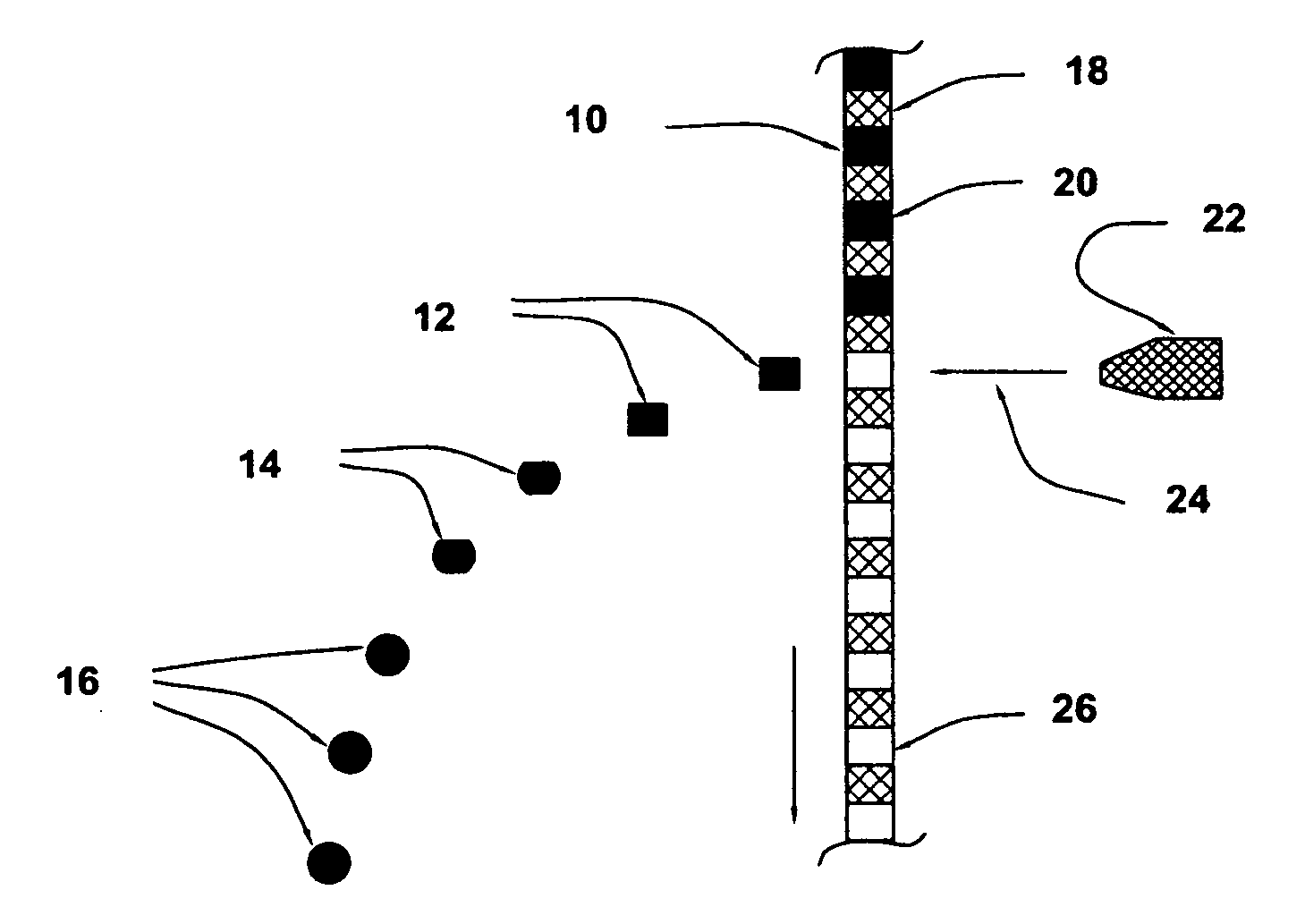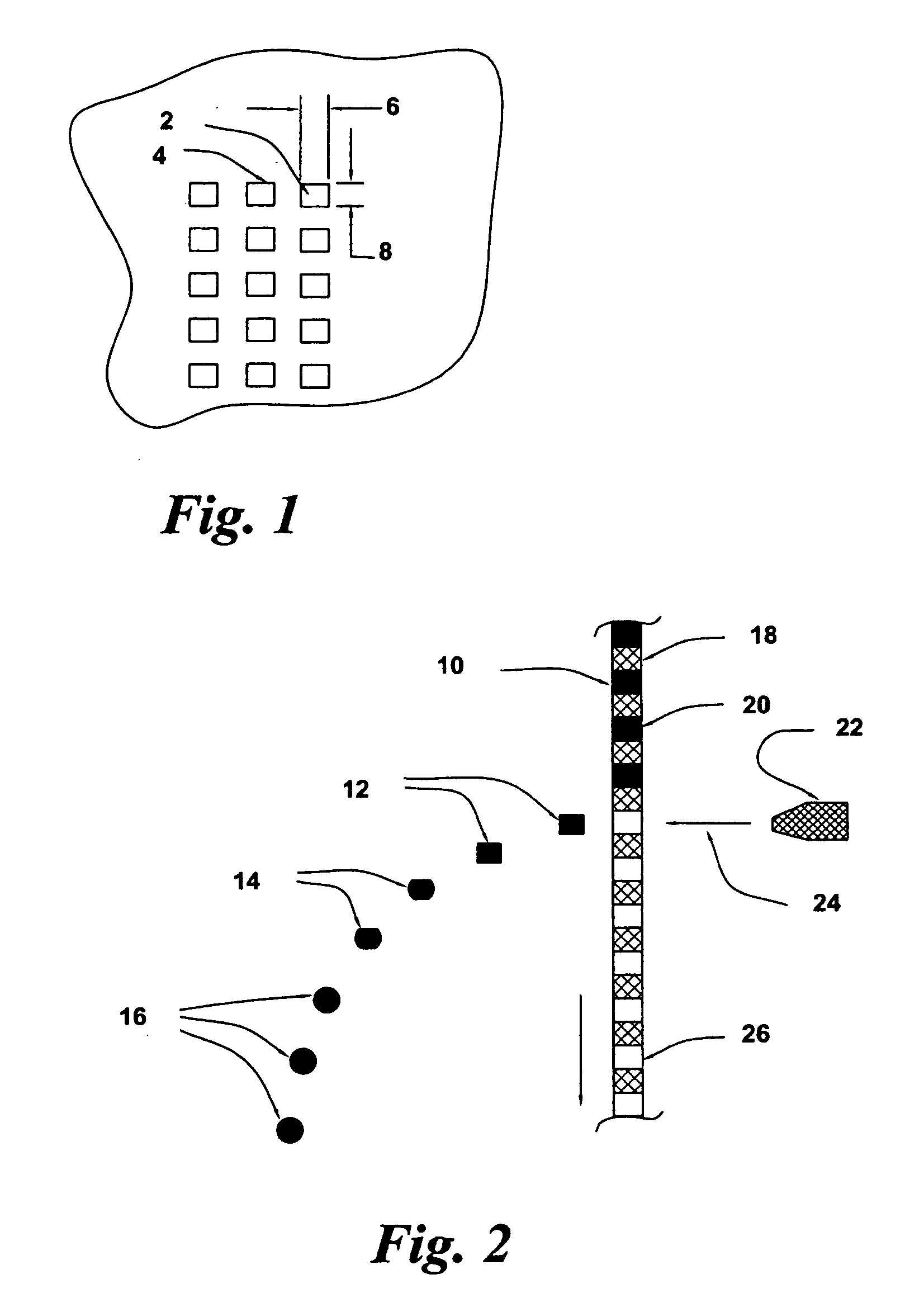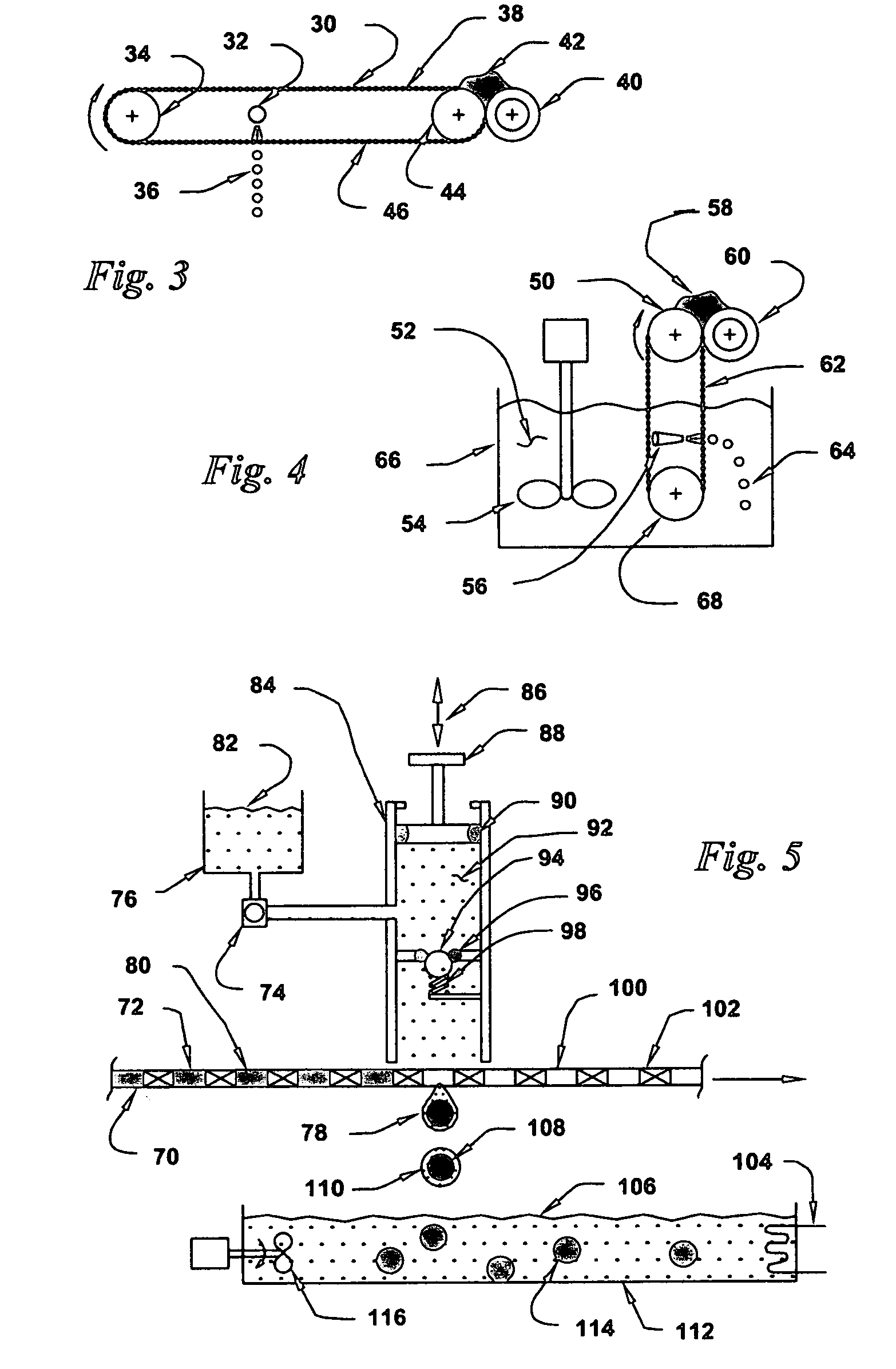Equal sized spherical beads
a technology of equal sized spherical beads and beads, which is applied in the direction of grinding devices, manufacturing tools, other chemical processes, etc., can solve the problems of waste, undersized beads that are not used in the abrading process, and expensive materials commonly used in including diamond particles
- Summary
- Abstract
- Description
- Claims
- Application Information
AI Technical Summary
Benefits of technology
Problems solved by technology
Method used
Image
Examples
Embodiment Construction
[0070]Abrasive particles or abrasive agglomerates can range in size from less than 0.1 micron to greater than 400 microns. In the abrasive agglomerates, hard abrasive particle grains are distributed uniformly throughout a matrix of erodible material including softer microporous metal or non-metal oxides (e.g., silica, alumina, titania, zirconia-silica, magnesia, alumina-silica, alumina and boria or boria) or mixtures thereof including silica-alumina-boria or others.
[0071]Near-spherical composite abrasive shapes can be produced by creating agglomerates of an water based abrasive slurry that are dried when free-span travelling in heated air or in a dehydrating liquid during which time surface tension forces tend to produce near-spherical shapes prior to solidification of the agglomerates. A desirable size of agglomerates having 10 micron or less abrasive particles is 30 to 45 microns or less and a desirable size of agglomerates having 25 micron or less abrasive particles is 75 microns...
PUM
| Property | Measurement | Unit |
|---|---|---|
| diameter | aaaaa | aaaaa |
| diameter | aaaaa | aaaaa |
| travel distance | aaaaa | aaaaa |
Abstract
Description
Claims
Application Information
 Login to View More
Login to View More - R&D
- Intellectual Property
- Life Sciences
- Materials
- Tech Scout
- Unparalleled Data Quality
- Higher Quality Content
- 60% Fewer Hallucinations
Browse by: Latest US Patents, China's latest patents, Technical Efficacy Thesaurus, Application Domain, Technology Topic, Popular Technical Reports.
© 2025 PatSnap. All rights reserved.Legal|Privacy policy|Modern Slavery Act Transparency Statement|Sitemap|About US| Contact US: help@patsnap.com



